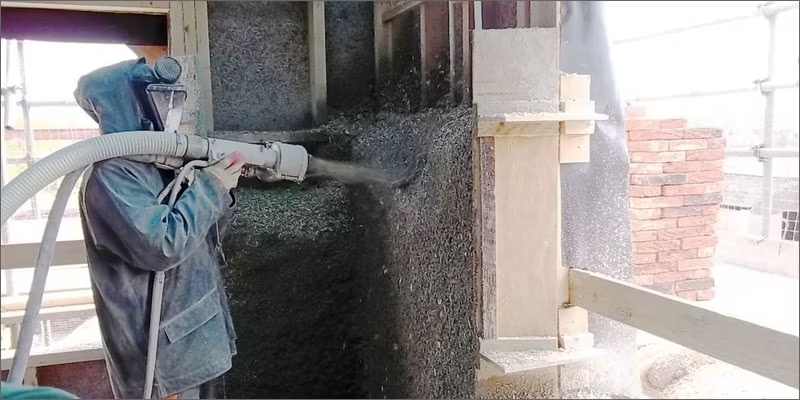Why Los Angeles Needs Sustainable Rebuilding Solutions
Los Angeles has faced devastating wildfires in recent years, leaving thousands of families without homes. The urgency to rebuild isn’t just about providing shelter—it’s...
Hempcrete is a building material that is gaining popularity as a sustainable alternative to traditional concrete. Made from the woody core of the hemp plant mixed with a lime binder, hempcrete is a carbon negative building material that has many benefits over traditional concrete.
One of the biggest advantages of hempcrete is its ability to sequester carbon. Concrete production is a major contributor to greenhouse gas emissions, accounting for approximately 8% of the world's carbon dioxide emissions. On the other hand, hemp is a highly efficient carbon sink. It can absorb up to four times the amount of carbon dioxide than trees can. This means that using hempcrete in building construction can help to offset some of the carbon emissions produced by concrete production.
Hempcrete also has many other environmental benefits. It is a natural insulator, which means it can help to keep buildings cool in the summer and warm in the winter, reducing the need for energy-intensive heating and cooling systems. It is also a natural air purifier, helping to improve indoor air quality.
Another advantage of hempcrete is its durability. It is resistant to moisture, mold, and insects, making it a long-lasting and low-maintenance building material. This makes it particularly well-suited for use in climates with high humidity or rainfall.
In terms of cost, hempcrete is competitive with traditional concrete. While the cost of raw materials may be slightly higher, the reduced energy costs and low maintenance costs associated with hempcrete can offset this. Additionally, there are many hemp suppliers around the world and the plant is easy to grow, it will make the cost more affordable.
Hempcrete is also an easy material to work with. It can be poured into forms like traditional concrete or can be used in a more traditional method called "cob" construction. Because it is easy to shape and mold, it can be used in a variety of different building styles and designs.
Despite its many benefits, there are still some challenges to using hempcrete on a larger scale. The biggest of these is the lack of standardization and regulations surrounding the use of hempcrete. Because it is a relatively new building material, there is currently no set of industry standards for its production, installation, or use. This makes it difficult for builders and architects to use hempcrete with confidence.
However, as awareness of the benefits of hempcrete grows, it is likely that these challenges will be addressed. Already in some countries, there are regulations being put in place to support the use of hempcrete, and many organizations are working to develop industry standards.
Overall, hempcrete is a sustainable concrete alternative that offers a wide range of benefits over traditional concrete. By absorbing carbon and reducing energy consumption, it can help to mitigate the impact of the construction industry on the environment. It is also a durable, low-maintenance, and cost-competitive building material that is easy to work with. As we continue to search for more sustainable building options, hempcrete is definitely a material worth considering.
In conclusion, Using hempcrete as a concrete alternative is a more sustainable and environmental friendly solution, it also offers many benefits over traditional concrete, such as being a natural insulator, air purifier, and it's also durable, low-maintenance and cost-competitive. As the awareness about the benefits of hempcrete grows, standardization and regulations will become more clear, making it easier for builders and architects to use hempcrete in construction projects. The use of hempcrete can help to create a carbon negative system that will help to offset some of the carbon emissions produced by traditional concrete production.
Lorem ipsum dolor sit amet consectetur, adipisicing elit. Ipsa libero labore natus atque, ducimus sed.
